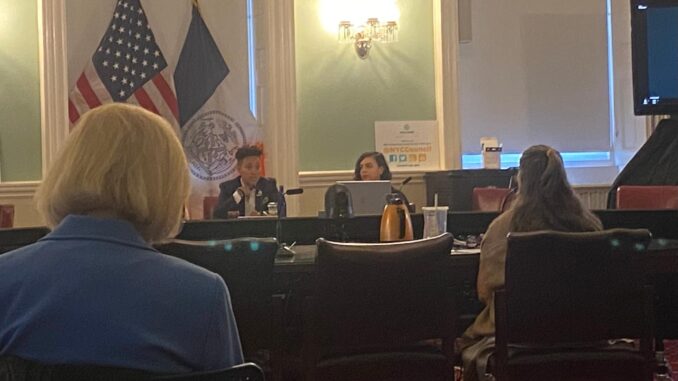
BY CAITLYN JONSSON
Services designed to support older adults struggle to maintain pace with the aging population in New York City. Between 2011-2020, the number of adults over the age of 65 in NYC grew by 36%, while those below the age of 65 declined by 2%. NYC Health projects that the number of older adults will increase an additional 41% by 2040.
In response to these demographic changes, the New York City Council Committee on Aging held an oversight hearing on September 23rd to evaluate the future of the city’s Community Care Plan, a five-year initiative launched in 2021. The plan aims to meet the needs of older adults by prioritizing services that allow them to age in place and remain in their homes and communities rather than being moved to institutional care.
The Department for the Aging allocated $179.2 million, largely from temporary COVID-19 relief funds, to support the Community Care Plan from 2022 to 2025. However, with pandemic-related federal funding set to expire by the end of 2024, DFTA has not secured additional resources to cover the impending shortfall. The DFTA currently has $17 million allocated for 2025 and is asking for an additional $78.2 million for at-home care. Without this financial support, many services could face cuts, which would place additional financial burdens on families.
The Community Care Plan includes expanded home care services, caregiver support, and programs that address the social, health, and nutritional needs of older adults. It also works to increase access to mental health services, transportation, and affordable housing resources for the aging population. Additionally, aging in place as supported by the plan reduces costs to the city, according to data cited by Lorraine Cortéz-Vázquez, the Commissioner of the Department for the Aging. Keeping a person in their home costs $32,000 annually, compared to the required $154,000 a year to maintain a person in institutional care.
People who remain in their homes “are more likely to physically thrive for longer periods of time than when placed in institutional care,” said Commissioner Cortéz-Vázquez. According to the Community Care Plan, 90% of older adults expressed a strong preference for aging in their communities as opposed to being placed in institutionalized care. Aging at home is said to improve physical and mental health, increase community involvement, and decrease social isolation.
“Data show that community care helps people stay healthy longer and avoid institutional care,” said Chair of the Committee on Aging Crystal Hudson. “Community care is the best way to help older New Yorkers support their health,” Hudson continued. Hudson sponsored a 10-year plan to support aging in place (INT 1054-2024). The bill builds upon the current 5-year plan, with a focus on investing in programs that allow older adults to age in place across the city.
However, a home is required in order to age in place, and New York City’s older adult population is disproportionately impacted by the housing crisis. The number of homeless individuals aged 65+ increased by over 300% between 2004 and 2017. “You can’t have a home care aid if you don’t have a home, the rate of older adult homelessness is growing at a rate three times higher than younger populations,” said Kevin Kiprovski, Director of Public Policy at LiveOn NY.
Without additional funding, essential services could be reduced or eliminated, placing a greater financial burden on families. Advocates called for increased state and local funding to fill the gap left by the end of COVID-related federal funds.
Tara Klein, the Deputy Director of Policy and Advocacy for United Neighborhood Houses said that “any programs that shrink or close are catastrophic for the older adult population. We need investments and not cuts.”
